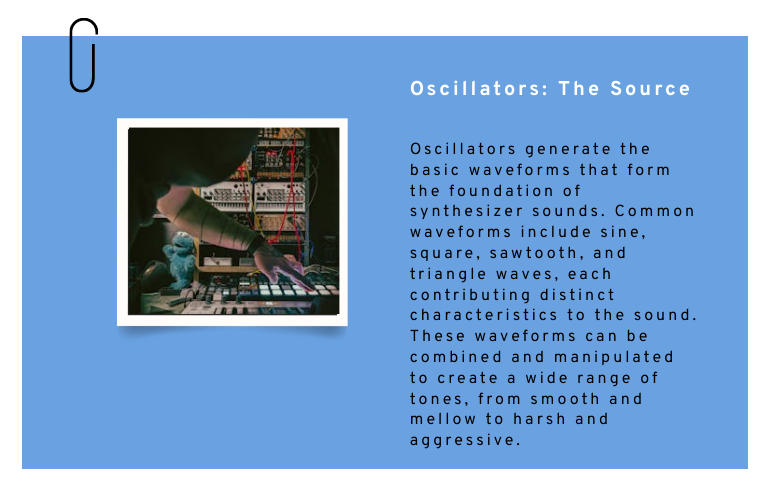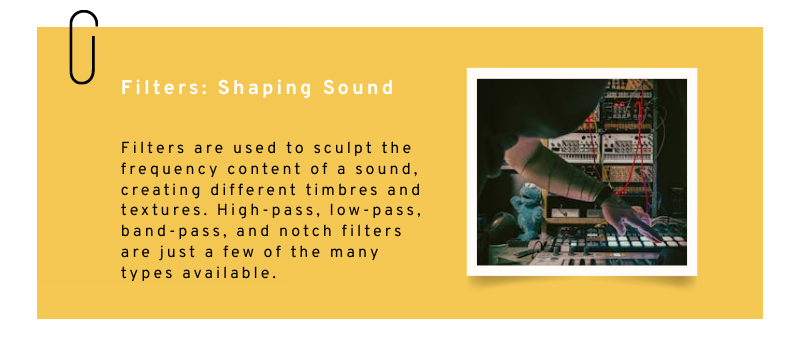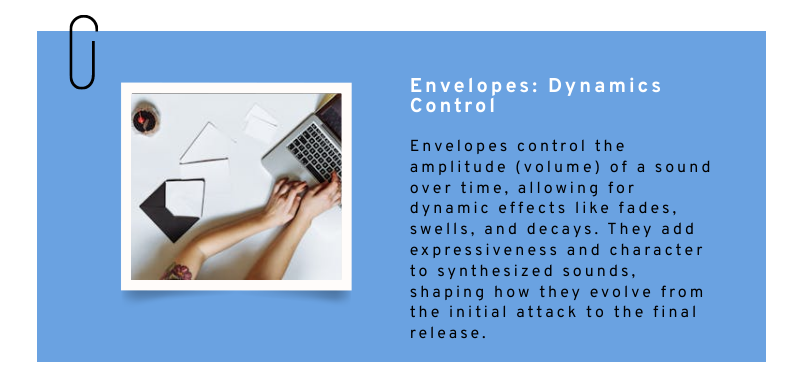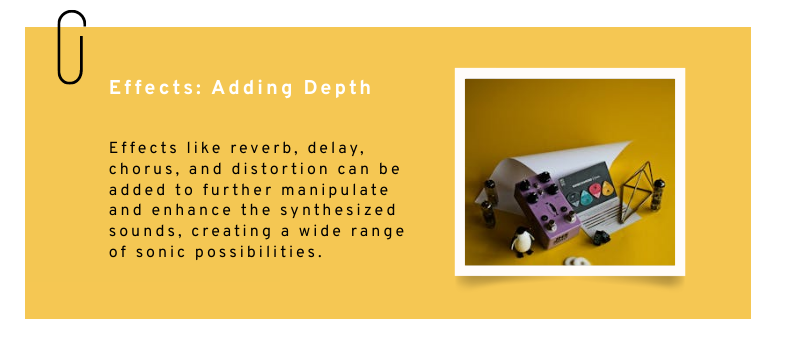The Synthesizer: Unlocking the Secrets of Sound

Synthesizers are electronic instruments capable of producing a wide range of sounds. They have revolutionized music across genres, from electronic dance music to pop.
Key Components
Oscillators
The source of sound waves in a synthesizer, producing various waveforms like sine, square, and sawtooth.

Filters
Shape the sound by removing certain frequencies, commonly using low-pass, high-pass, and band-pass filters.

Envelopes
Control how the sound evolves over time, typically using ADSR (Attack, Decay, Sustain, Release) envelopes.

LFOs (Low-Frequency Oscillators)
Modulate other components to create effects like vibrato and tremolo.

How Synthesizers Work
The oscillator generates a sound wave, which is shaped by the filter. The envelope modifies the sound's dynamics, and the LFO adds modulation before the final output.

Types of Synthesizers
Analog Synthesizers
Use analog circuits and components to generate sound. Known for their warm, rich tones.
Digital Synthesizers
Use digital signal processing to create sounds. Known for their precision and versatility.
Modular Synthesizers
Comprised of individual modules that can be connected in various configurations, offering extensive customization and flexibility.
Famous Songs Featuring Synthesizers
Donna Summer - "I Feel Love"
Groundbreaking use of the Moog synthesizer for its pulsating bassline.
Kraftwerk - "Autobahn"
Iconic use of synthesizers to create a minimalist, motorik rhythm.
Michael Jackson - "Thriller"
Utilizes the Yamaha DX7 synthesizer to add futuristic sounds to the track.